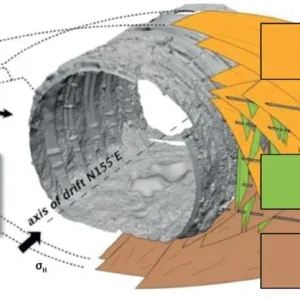Asking about HAVS law, you are likely to be guided towards the UKs The Control of Vibration at Work Regulations of 2005, which implements a European Council Directive 2002/44/EC (L177, 6.7.2002). This, comparatively recent instrument was preceded only by guidance and standards on the maximum exposure to which workers can be safely exposed.
Europe/International
European Directives take the form of European law under which the members of the European Union (EU) are obliged to comply with and enforce the provisions contained once it comes into force. This may take the form of minimum national legislation to comply with the Directive, but may also include extra or more stringent provisions so long as these do not, unnecessarily, interfere with free trade.
European Council Directive 2002/44/C (L177, 6.7.2002) (known as the Physical Agents Directive) introduced EU-wide provisions for the protection of workers from the harmful effects of vibration caused by equipment and machinery. The European Machinery Directive 2002/44/EC also has relevance.
Like much legislation, it is based on agreed national and international standards in its details; in this case the provisions of ISO 5349 (-1 and -2):2001, Mechanical vibration – Measurement and evaluation of human exposure to hand-transmitted vibration, general requirements and practical guidance for measurement at the workplace, in two parts. The equivalent European Standard was approved by CEN in 2001. In addition there is ISO 8041 on human responses to vibration, which has information on measuring and checking the conformity of equipment.
In addition to the EU many others countries have based their safety legislation on the provision of European Directives both in order to establish a framework quickly and also to facilitate equipment exports to the EU.
In Germany the equivalent to the UKs Health & Safety Executive (HSE) is the Berufsgenossenschaft Bau (occupational insurance company).
UK
In general, health and safety at work in the UK is governed by the Health and Safety at Work etc Act 1974. Under this act a number of regulations have been set up by the responsible government minister to provide more details on specific hazards and other situations.
Regulations in force which are likely to be relevant to hand-mine tunnelling, and HAVS in particular, include Management of Safety and Health at Work Regulations 1989, The Workplace (Health, Safety ad Welfare) Regulations 1992, Construction (Design and Management) Regulations 1994, The Construction (Health, Safety and Welfare) Regulations 1996, The Confined Space Regulations 1997, The Provision and Use of Work Equipment Regulations 1998 and The Control of Vibration at Work Regulations 2005.
Until 2005 there was no specific legislation on HAVS; only recommendations from the HSE, which could be enforced under more general legislation. The 2005 regulations only cover single-axis vibration rather than triaxial effects. As a result, there could be a lot of vibration ‘hidden’ on the other two axes.
Paul Brereton, noise and vibration engineer with HSE, mentioned an overdue review of vibration recommendations. This will be presented at this year’s UK conference on Human Response to Vibration at the Health & Safety Laboratory, Buxton on 20-22 September. But apparently HAVS philosophy is stable at the moment and he sees no change. What will perhaps change, he says, is the information manufacturers provide to contractors according to the European Machinery Directive.
One problem in trying to follow the law whilst conducting a tunnelling operation is interpretation of regulations and guidance, and the fact that much is left to ‘doing the most that can reasonably be expected’. Therefore the British Tunnelling Society, with the Pipe Jacking Association and HSE, has come up with guidelines specific to the industry. For now the newly British Standard 6164:2001 (which also has an ISO equivalent) has guidance on vibration in clause 19.
Limit values for vibration exposure have been set. There is an Exposure Limit Value (ELV) for vibration of 5.0m/s2 A(8) beyond which a worker cannot be exposed under any circumstances. An Exposure Action Value (EAV) of 2.5m/s2 A(8) is the maximum triaxial vibration exposure normalised over the 8h working period (hence A(8)).
Achieving these limits can be tricky, especially with traditional equipment. Dr Donald Lamont, formerly of the UK Health and Safety Executive, says, “Protection against vibration exposure must be undertaken in accordance with the hierarchy of ‘General principles of prevention’ in Schedule One to the Management of Health and Safety at Work Regs.”
These are (in hierarchical order):
(a) Avoiding risks;
(b) Evaluating the risks which cannot be avoided;
(c) Combating the risks at source;
(d) Adapting the work to the individual, especially as regards the design of workplaces, the choice of work equipment and the choice of working and production methods, with a view, in particular, to alleviating monotonous work and work at a predetermined rate and to reducing their effect on health;
(e) Adapting to technical progress;
(f) Replacing the dangerous by the non-dangerous or the less dangerous;
(g) Developing a coherent overall prevention policy which covers technology, organisation of work, working conditions, social relationships and the influence of factors relating to the working environment;
(h) Giving collective protective measures priority over individual protective measures; and
(i) Appropriate instructions to employees.
Gloves, which may be provided within (h) in the hierarchy as personal protective equipment are not, says Lamont thought to provide much direct protection other than keeping the hands warm.
North America
The American Conference of Governmental Industrial Hygienists (ACGIH) recommends guidelines and threshold limit values (TLVs) for vibration exposure from hand-held tools based on international standard ISO 5349.
According to information provided by the Canadian Centre for Occupational Health and Safety (CCOHS), ACGIH exposure limits are given as frequency-weighted acceleration that represents a single number measure of the vibration exposure level.
ACGIH has determined acceleration levels and exposure durations to which most workers may be exposed repeatedly without severe damage to fingers, advises that these guidelines be applied in conjunction with other protective measures including vibration control.
Many Canadian jurisdictions do not have regulations concerning vibration exposure. The CCOHS advises that engineering controls, protective equipment and safe work practices should be used to reduce the level of exposure. The TLVs and guidelines recommended by the ACGIH are often used by Canadian agencies in the absence of formal regulations, says the CCOHS.
In the United States, guidelines offered by the National Institute for Occupational Safety and Health (NIOSH) include the TLVs recommended by the ACGIH, the European Union Directive 2002/44/EC, and the American National Standards Institute (ANSI) standard for HAVS introduced in 2006. The new ANSI S2.70-2006 standard sets a Daily Exposure Action Value of 2.5m/s2 and a Daily Exposure Limit Value 5.0m/s2 as in Europe. The full standard is available through ANSI. The Occupational Safety & Health Administration (OSHA) does not have any regulations for HAVS. The NIOSH does offer criteria for a recommended standard, which dates back to 1989 and can be found online.
Australia
There is no current national code of practice or statute law on vibration control and mitigation in Australia according to risk management consultant Noel Arnold & Associates. Health and safety officers are not ‘flying blind’, however, since individual state governments and regulatory bodies have not been idle in releasing their own documentation on how best to protect their workers from vibratory occupational health risks such as HAVS, otherwise known as Raynaud’s Phenomenon (after the discoverer), and vibration-induced white finger.
In the state of Queensland tunnellers should be familiar with Tunnelling Code 2007, a supplementary document to be read beside the Workplace Health and Safety Act 1995. Coming into action in 2007, amended in 2008 and again in 2010, the code gives practical advice on ways to manage exposure to tunnelling-related risks and is considered relevant until 2017.
As with the European standards, it recommends that certain measures be taken at given levels of exposure. For example, where hand arm vibration is judged to exceed 2.9m/s2 the exposed workers must have regular health surveillance as determined by an occupational physician and that ‘relevant persons’ should ensure that vibration does not exceed 5.0m/s2.
A relevant person’s responsibilities are given in the Workplace Health and Safety Act 1995 – a legislative document of Queensland drawn on repeatedly by the Tunnelling Code 2007 – as “a person who conducts a business or undertaking has an obligation to ensure the workplace health and safety of the person, each of the person’s workers and any other persons is not affected by the conduct of the relevant person’s business or undertaking.”
Recommended precautions should be familiar to European eyes, and include job rotation, appropriate tool selection and maintenance, training and so on.
Government statutory agency, the Australian Safety and Compensation Council (ASCC) has researched worker conditions and the effect of contact with vibration with the National Hazard Exposure Worker Surveillance (NHEWS) Survey in 2008: vibration exposure and the provision of vibration control measures in Australian workplaces. The ASCC was reformed as Safe Work Australia from 2009 and has plans to shake up guidance on vibration in the workplace as one of its codes of practice priorities. Speaking to T&TI, a Safe Work Australia spokesman said, “Safe Work Australia intends to develop two new model codes of practice to provide advice on minimising the hazards of vibration and blood-borne pathogens in the workplace by the end of 2012.
“Both of these codes are to be developed within the framework of the new national Work Health and Safety legislation. We are inviting people from all industries to public consultation workshops to get a range of ideas on the scope, application and approach to these two codes.”
Japan
Limited information sourced so far indicate that HAVS or ‘Raynaud’s Phenomenon’ is a matter for assessment of the effects, further research and compensation. Research has been carried out for the Japan Labour Health and Welfare Organisation and the Japanese Ministry of Health, Labour and Welfare, (see Fugiwara et al in Japan Occup Health 2008: 50: pp.75-78) on finger systolic blood pressure testing (FSBP%) related to cold and vibration effects.
Comments include, “In terms of medico-legal aspects, objective recognition of Reynaud’s Phenomenon is considered to be most important in judging the syndrome as an occupational disease. Any recognised appearance of ‘white finger’ as determined by doctor’s inspection and FSBP% testing is considered as HAVS in accordance with the Worker’s Accident Compensation Insurance Law. If the patient complains of ‘blanching attacks’ without support from the inspection registration of these cases must be judged as of ‘unidentified phenomenon’.
Table 1: The ACGIH Threshold Limit Values (TLVs) for exposure of the hand to vibration in X, Y, or Z axis







